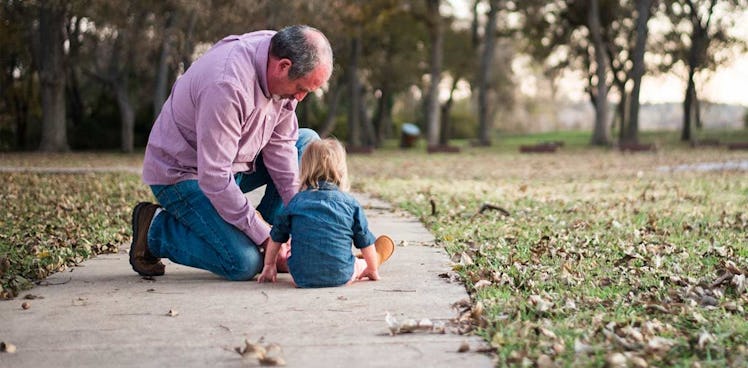How To Provide First Aid For All Your Toddler’s Injuries
Cold compress first. Kiss second.

Living with a toddler is like living with a drunk roommate. They’re impossible to understand. They might pee or poop themselves occasionally. On most occasions they make questionable choices. They cry and laugh without warning. And, because they have trouble walking a straight line, they are prone to falling over and hurting themselves.
Sadly there is no intervention for 2-year-olds, and you can’t just change the locks on them. Your best course of action then is to get way better at figuring out how to treat the many possible injuries they’re probably going to get.
It Was An Accident
It doesn’t really matter how vigilant you’ve been with your childproofing. And all your barking about hot stoves and electrical outlets can only do so much to fight toddler curiosity. Plus, at some point they’ll have to leave the padded corner confines of your hacienda.
Eventually your little so and so is going to have an accidental injury. It’s your job to understand the severity and react accordingly. Here are the probable biffs and bangs and ouchies (from the experts at Stanford):
- Bug bites and stings
- Cuts, scrapes, and minor wounds
- Superficial head injuries
- Eye trauma
- Muscle and joint tweaks
- Burns
- Poisoning
Building A First Aid Kit
A badass kit will be your best intervention when your kid inevitably comes at you with one of those red-faced silent screams. Here’s a super-duper pro-tip: “adhesive bandages” (brand name Band-Aid) are your best friend. They are magical objects that seem to cure ills even if there is no blood. Have them on hand at all times. But also have:
- Hypoallergenic tape
- Waterproof tape
- Sterile gauze pads
- Stretchable gauze rolls
- Sterile eye patches
- Triangle cloth sling
- Scissors
- Thermometer
- Tweezers
- Children’s acetaminophen
- Antiseptic ointment
- Calamine lotion
If you want to make a truly epic kit, add a bit more. But, make sure you check in every so often to see how it’s stocked. Last thing you want to do is to run out of SpongeBob SquareBandages.
Hospital Worthy?
There are times a little antiseptic ointment and a kiss on the offending boo boo is not going to be the best course of action. Some of the times will be obvious. Other’s might be a bit more of a head-scratcher. Here are some reasons you might want to call 911 or roll to the nearest ER ASAP.
- Eye injuries
- Animal bites
- Seizures
- Sudden dizziness
- Coughing up blood
- Bleeding that doesn’t stop with applied pressure
- Blue skin, lips or nailbeds
- Any severe burns, particularly to the face
- Allergic reactions with symptoms that include hives, swelling of face or lips, wheezing or trouble swallowing
Is It A Concussion?
While your toddler will most definitely bonk their heads, it doesn’t mean each bonk needs to be followed up by a concussion protocol. However, that doesn’t mean you can just laugh off a head injury. Here are some things to consider:
- After a serious bonk, make sure you interact with your kid for a bit. With a toddler, it’s really the only way to figure out if they are experiencing concussion symptoms.
- Concussion symptoms can be subtle, so look for general fogginess or confusion, along with slow responses or irritability.
- You should watch your kid carefully for up to 24 hours after a head injury.
- Never ignore post-head injury issues that include vomiting or severe headache.
- If your kid is concussed get to the doctor as soon as you can. Once back home, there’s no need to keep them awake. Sleep heals.
Your Life As First Responder
There is a key to dealing with toddler injuries: their reaction will mirror yours. The more stressed or panicked you are in injury situations, the more freaked out they’ll be. So keep calm and do what you have to do. A low tone and a calm voice never hurt anyone.
Be warned. This may not work for any drunks you know. That’s where the toddler comparison ends.